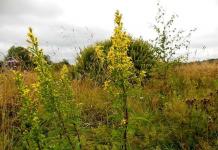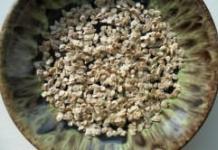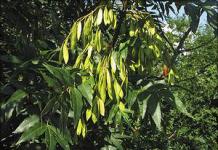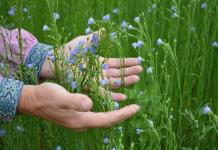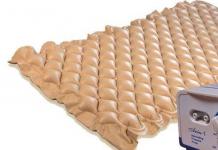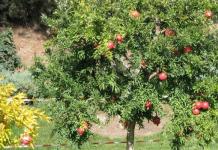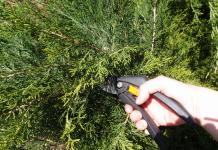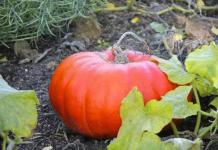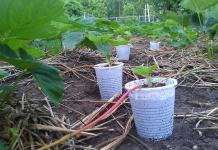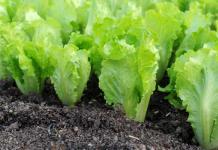With the right agricultural technology, cucumbers are able to bear fruit until frost, but often the last crops are harvested much earlier. In order for the life of the plant not to be interrupted ahead of time, all the rules for its cultivation must be strictly observed, but there are some tricks that allow you to extend the fruiting for a couple of weeks.
Effective methods for prolonging the fruiting of cucumbers
First of all, to create conditions for long-term fruiting, one should not forget about those moments without which cucumbers will not give a normal harvest at all.
The main thing in growing cucumbers
To make cucumbers comfortable, they must be planted in a place protected from the winds. The bed should be well fertilized, and the sowing of seeds or planting seedlings should be carried out on time. Cucumbers are planted in open ground only at the onset of this summer, earlier - only under film shelters. In order for cucumbers to bear fruit until autumn, you can plant them in several stages with an interval of 2 weeks; this applies to both open ground and greenhouses.
Even in open ground, cucumbers are usually planted first under a film.
Early varieties are planted first, from which, most often, long-term fruiting should not be expected. Mid-season cucumbers are suitable for both canning and fresh consumption. And planting late-ripening varieties, such as Phoenix, at a later date, will also allow harvesting in unprotected soil until frost.
When choosing late varieties, it is better to focus on self-pollinating hybrids, since insect flight decreases in September.
Landings should not be thickened. Every 2 weeks, cucumbers must be fed using diluted infusions of mullein or bird droppings. If cessation of growth and yellowing of the leaves are noticed, foliar top dressing with urea is useful. Cucumbers should be watered only with warm water and only under the root, soaking the soil by at least 15 cm, and then mulching.
It is best to grow cucumbers in a vertical culture; most varieties require the mandatory formation of a bush. The fruits must be removed at least 2 times a week, avoiding leaving overgrown specimens on the lashes.
Cucumbers left on the seed plants sharply inhibit the growth of new greens and cause the bush to age.
When the air temperature drops below 12 ° C, the construction of shelters is mandatory, for which arcs are arranged in advance. It is useful to use warm beds based on biohumus for cucumbers. Low temperatures are especially dangerous in August-September. They cause the occurrence of fungal diseases, such as powdery mildew or downy mildew. Diseases must be dealt with immediately.
Ways to prolong fruiting
In addition to compliance with agricultural technology, it is worth considering the following:

All these measures apply to greenhouse cultivation, but there are fewer problems with cooling, and more with diseases. In greenhouses, you need to immediately cut off the leaves as they begin to dry out. Withering plants are best eliminated as soon as possible. On healthy ones, thin shoots are cut off in August, as well as fruit-bearing ones located in the lower part of the bush. Preventive spraying of bushes with Fitosporin or infusion of onion peel is useful.
There are no such drastic measures that would allow cucumbers to bear fruit twice as long as natural ones, but it is quite possible to extend the fruit harvest by 2–3 weeks. To do this, you just need to follow all the rules of growing and monitor the plants almost daily.
Let's see how to prolong the fruiting of cucumbers in the open field, cucumbers can bear fruit for up to 3 months, almost before the onset of the first autumn frosts.
However, harvesting often ends in mid-August. What can be done to extend this period?
To prolong the fruiting of cucumbers in the late summer period, you need to keep the leaves healthy. Therefore, it is important to pay special attention to the fight against plant diseases.
Protection of cucumbers from diseases
Cucumbers are a rather capricious crop to grow. Lack of nutrients, care errors, and especially diseases are immediately reflected on the leaves of the seedlings - they turn pale, turn yellow and fall off.
In the conditions of the middle zone, the greatest harm to the cucumber crop is caused by real and downy mildew. The development of the first is facilitated by hot and dry weather, and the second by cold nights with heavy dews, which just come in August.
Green oily spots with a white coating appear on the leaves, which increase in size within 8-10 days. Then the leaves turn yellow, brown and dry after 2-3 days. Many gardeners mistakenly believe that this is the result of acid rain.

Causes of powdery mildew:
- cooling or large differences in day and night temperatures (25 ° C during the day, 10-14 ° C at night);
- watering with cold water or cold rains;
- abundant condensation on the film (especially in the greenhouse), due to which the plants are constantly wet.
Powdery mildew control measures
1. At the first signs of the disease, stop watering and fertilizing for 6-7 days. Then spray the cucumbers with Azofos solution (its temperature must be at least 25 ° C) or other copper-containing preparations.
2. At night, additionally cover the plants with a film or other material to keep warm.
3. Good results are obtained by spraying with a whey solution (3 liters per 7 liters of water) with the addition of 1 tsp. copper sulfate.
In addition to protection against powdery mildew, cucumbers also need other care activities.
Simple ways to prolong the fruiting of cucumbers

1. Do not disturb plants in August. Horizontal lashes located on the ground are able to form auxiliary roots that feed the plants. Changing the position of these shoots shortens the fruiting period.
2. Protect cucumbers from such dangerous diseases as ascochitosis, anthracnose, bacteriosis, cladosporiosis, peronosporosis, sclerotinia. To do this, use fungicides and growth stimulants (Ekosil, Epin).
3. Protect plants from temperature stresses: protect from low temperatures in August - early September, cover for the night.
 Spunbond can be used as a covering material.
Spunbond can be used as a covering material. 4. Harvest in time, as the "seeds" accelerate the aging of the lashes.
5. In August, water cucumbers moderately and only in the morning. Indeed, at night there is a lot of moisture in the air, which plants absorb well with leaves, and for the day they need to stock up on water.
6. For pollinated varieties, attract bees by planting August and autumn flowers on the site, on which these insects actively flock.
As you can see, it is not difficult to extend the fruiting period of cucumbers. Take note of these simple tricks - and your green pets will not be stingy with a rich harvest.
In open ground, cucumbers are able to bear fruit for up to 3 months, almost before the onset of the first autumn frosts. However, harvesting often ends in mid-August. What can be done to extend this period? It is possible to prolong the fruiting of cucumbers in the late summer period by keeping the leaves healthy, i.e. focusing on plant disease control. In the conditions of the middle lane, powdery mildew and downy mildew cause the greatest harm to them. The development of the first is facilitated by hot dry weather, the second by cold nights with heavy dews, which just come in August. Signs of the disease Multifaceted green oily spots appear on the leaves, which increase in size within 8-10 days. Then the leaves turn brown and dry out after 2-3 days. Many gardeners mistakenly believe that this is the result of acid rain. Causes Cooling or large differences in day and night temperatures (25 ° C during the day, 10-14 ° C at night). Watering with cold water or cold rains. Strong condensation on the film (especially in a greenhouse), from which the plants are constantly wet. Control measures At the first signs of the disease for 6-7 days, stop watering and top dressing. After that, spray the cucumbers with Azofos solution (its temperature must be at least 25 ° C) or other copper-containing preparations. At night, additionally cover the plants with a film or other material to maintain this temperature. Good results are obtained by spraying with a solution of whey (3 liters per 7 liters of water). How to rejuvenate cucumbers? Do not disturb the plants in August. Horizontal lashes located on the ground are able to form auxiliary roots that feed the plants. Changing the position of these shoots shortens the fruiting period. Protect cucumbers from diseases: ascochitosis, anthracnose, bacteriosis, cladosporiosis, peronosporosis, sclerotinia. Protect plants from temperature stresses: protect from low temperatures in August - early September, cover for the night. Harvest in time, as the "testes" accelerate the aging of the lashes. In August, water cucumbers moderately and preferably only in the morning. At night, there is a lot of air moisture, which cucumbers absorb well with leaves, and for the day they need to stock up on water. For pollinated varieties, attract bees in every possible way by planting August and autumn flowers, on which these insects actively flock.
1.7M participants
Potato. How to collect 40 buckets from 20 bushes Is it possible to grow a whole bucket of potatoes from one bush? Can!!! And now I will tell you how to do it. I found these great tips in the Horticulture Journal: Each type of soil has its own cultivation practices: wet - high beds, dry - beds below ground level, and so on. And if the plot is on rich black soil? And here there are subtleties. I want to describe how we planted potatoes on black soil using amophoska (1 tsp for 5 bushes). At first, I cut the potatoes so that there were 2-3 eyes, 20 pieces came out. Then, for 10 liters of summer water, I added 1 tbsp. l. Bordeaux mixture, 0.5 cups of ash, 1 tsp. boric acid and a little potassium permanganate so that the color is slightly pink. And soaked all the seed material for 15-30 minutes. This mixture heals potatoes, and boric acid - from blackness and holes inside the tubers. True, since I began to constantly cut potatoes, I have already forgotten what blackness is, and I have stopped changing the seeds. After bathing, the potatoes dried and outlined 20 holes. She put a piece in each piece with her eyes up and scooped up a hump with a hoe, throwing a little amophoska into the hole. And when the tops grew to 12-15 cm, we moved them apart (tilted) to the sides and covered them with earth in a circle. After some time, the tops grew again, and we fell asleep again. And when they began to dig potatoes, they could not cope with a shovel - they took wide pitchforks and dug the bush from all sides. The bush gave two buckets of potatoes, there were almost no small ones. And we also have potatoes, somewhat similar to the Karaganda variety, only it is with pink eyes and oblong, and this one is more oval and the eyes are red. Who calls her Rainbow, who is the Drunkard, and who is Bora. The variety is very early. We bought two buckets of it, cut it in the same way, but the pieces contained one and two eyes each. They planted it in the usual way, with amofoska, but after flowering and hilling, we dug it all summer from the end of May, once every 5-7 days, dug up each bush at least 4-5 times and collected 16 buckets in the first year! In the second year, we have been cultivating the land since autumn, and in the spring we dig up and plant vegetables again, but for personal reasons, I can’t now spend the night in the country, and I go there once a week, or even two. I rarely water, because I eat in the morning there, in the evening - back. I grow the following varieties: Nevskaya, Slavyanka, Raduga-Bora-Pyanitsa, Minerva, Carrera (16 bushes, but large), Adretta, Spark. The earth is sand with black soil. I planted it all by variety, dividing it with beans, raking ridges and sprinkling with amophos. People who planted with plowing complain that they have "baked" potatoes, and I only have one or two top ones turned green. And if you constantly loosen the ground with a chopper or flat cutter, then fleas, beetles, ticks, rot, etc. will disappear completely. World of ideas
A simple and affordable secret to growing a large crop of CUCUMBERS. The ovary of a cucumber grows very quickly, about a week. This means that if dozens of ovaries ripen on a plot at the same time, and when you remove them, the next ones begin to ripen, then such a plot consumes a lot of food. If you don’t feed it, the initial supply of fertilizer in the soil will end, and “crooked” cucumbers will go: imbalance of nutrients affects the shape of the fruit. The secret of feeding cucumbers: To get a rich harvest of cucumbers, you need to feed them regularly! Bread sourdough is the best fertilizer. It's very easy to prepare! We fill the bucket with 2/3 crusts of black bread, fill it with water and press it with something heavy so that the contents do not float up. We put the bucket for a week for fermentation in a warm place. We dilute the resulting sourdough with water (1: 3) and water the cucumbers under the root - 0.5 liters per bush. Cucumbers are starting to grow by leaps and bounds! Flowering and ovaries increase, cucumbers ripen faster and turn yellow less! Cucumbers grow envy beautiful, dense, juicy and fragrant! Try it! And one more thing about feeding cucumbers: In order to maintain the production of even greens, only a little feeding of cucumbers is required. A brown compost mash, or a greenish herbal fertilizer solution, will suffice. The more nitrogen you estimate in your feed, the more it needs to be diluted. (Lots of nitrogen where faeces or fresh manure got into the raw materials). Feed once a week at the rate of a bucket of top dressing per square meter. You can also use a mash of ash - 0.5-1 glass per bucket of water per 2 square meters.
Do not rush to throw away! We offer some tips on how to use on the farm, it would seem, already absolutely unnecessary things - just garbage. 1. Banana peels are great plant food. When transplanting a plant, add crushed peels to the pot - you can pre-dried for future use. The crusts rot very quickly and feed the plant with microelements, especially the most valuable potassium, which affects the growth of green mass. 2. Also a valuable source of potassium - unsweetened coffee grounds - just pour gently. 3. Walnut shells (peeled from partitions) are excellent natural drainage for indoor plants. When transplanting, lay the shells on the bottom of the pot. 3. In a pot of roses, you need to dig an iron nail under the roots. In the garden, iron tin cans dug closer to the roots are perfect for these purposes. When iron rusts, it turns into a ferrous form and becomes available for absorption by plants. Roses that receive enough iron oxides are healthier and bloom brighter. 4. Tangerine peels, dried and laid out in a wardrobe, will scare away moths and give a light aroma. 5. Orange peels - there is nothing better for cleaning the microwave. Put peels of 1-2 oranges in a bowl, pour enough water to cover them and heat at maximum power for 5 minutes. Wash the oven with a sponge and warm water. It cleans up easily and smells good. If this procedure is carried out regularly, you will not need any chemical detergents. ● ● ● ● ● ● ● ● ● ● ● ● ● ● ● ● ● ● ● ● ● ● ● ● ● ● ● ● ● ● ● ● ● ● ● ● ● ● To receive every day the best secrets of our groups directly to your ● page join us ➪ ● ● ● ● ● ● ● ● ● ● ● ● ● ● ● ● ● ● ● ● ● ● ● ● ● ● ● ● ● ● ● ● ● ● ● ● ● ● ●
How to prolong the fruiting of cucumbers?In open ground, cucumbers are able to bear fruit for up to 3 months, almost before the onset of the first autumn frosts. However, harvesting often ends in mid-August. What can be done to extend this period?
To prolong the fruiting of cucumbers in the late summer period, you need to keep the leaves healthy. Therefore, it is important to pay special attention to the fight against plant diseases.
Protection of cucumbers from diseases
Cucumbers are a rather capricious crop to grow. Lack of nutrients, care errors, and especially diseases are immediately reflected on the leaves of the seedlings - they turn pale, turn yellow and fall off.
In the conditions of the middle zone, the real and downy mildew cause the greatest harm to the cucumber crop. The development of the first is facilitated by hot and dry weather, and the second by cold nights with heavy dews, which just come in August.
Signs of powdery mildew on cucumbers
Green oily spots with a white coating appear on the leaves, which increase in size within 8-10 days. Then the leaves turn yellow, brown and dry after 2-3 days. Many gardeners mistakenly believe that this is the result of acid rain.

Causes of powdery mildew:
cooling or large differences in day and night temperatures (25 ° C during the day, 10-14 ° C at night);
watering with cold water or cold rains;
abundant condensation on the film (especially in the greenhouse), due to which the plants are constantly wet.
Powdery mildew control measures
1. At the first signs of the disease, stop watering and fertilizing for 6-7 days. Then spray the cucumbers with Azofos solution (its temperature must be at least 25 ° C) or other copper-containing preparations.
2. At night, additionally cover the plants with a film or other material to keep warm.
3. Good results are obtained by spraying with a whey solution (3 liters per 7 liters of water) with the addition of 1 tsp. copper sulfate.
In addition to protection against powdery mildew, cucumbers also need other care activities.
Simple ways to prolong the fruiting of cucumbers
1. Do not disturb plants in August. Horizontal lashes located on the ground are able to form auxiliary roots that feed the plants. Changing the position of these shoots shortens the fruiting period.
2. Protect cucumbers from such dangerous diseases as ascochitosis, anthracnose, bacteriosis, cladosporiosis, peronosporosis, sclerotinia. To do this, use fungicides and growth stimulants (Ekosil, Epin).
3. Protect plants from temperature stresses: protect from low temperatures in August - early September, cover for the night.
Target="_blank">http://www.xn--80afdb0cbapl.xn--p1ai/wp-content/up...odonoshenie-ogurcov2-80x60.jpg 80w, 265w" width="660" />
Spunbond can be used as a covering material
4. Harvest in time, as the "seeds" accelerate the aging of the lashes.
5. In August, water cucumbers moderately and only in the morning. Indeed, at night there is a lot of moisture in the air, which plants absorb well with leaves, and for the day they need to stock up on water.
6. For pollinated varieties, attract bees by planting August and autumn flowers on the site, on which these insects actively flock.
As you can see, it is not difficult to extend the fruiting period of cucumbers. Take note of these simple tricks - and your green pets will not be stingy with a rich harvest.
HOW TO PROLONG THE FRUITING OF CUCUMBERS
It is possible to extend the fruiting period of cucumbers if they are relatively healthy, not damaged by pests and continue to grow. Mustaches are an indicator of the state of plants. If the formation of the mustache has stopped, then the growing season is over, nothing can be done. If new tendrils form, at least in the upper part, then the plants can be rejuvenated. The formation of new mustaches of cucumbers is an indicator of plant growth
Cucumber rejuvenation
The essence of cucumber rejuvenation is to stimulate the formation of new roots in the lower part of the stem.
To do this, the whips must be removed from the trellises, parts of the bare stems should be placed in rings on the prepared soil (the mulch should be removed, the soil should be carefully loosened). It is desirable to fix the laid stems with something, for example, pin them with horns or wire staples. Then they need to be covered with nutritious disinfected soil. After some time, roots will appear on the part of the stem sprinkled with soil, which will provide a new wave of fruiting.
Cucumbers that can be rejuvenated (the lower part of the lashes is bare, while the upper one continues to grow)
In order not to break the whips when removed from the trellis, the plants should be slightly wilted, i.e. without pre-watering. This is easy to do if the cucumbers are formed into a single stem and are woven along a polypropylene twine attached to a horizontal bar at the top of the greenhouse. In this case, you need to untie the polymer thread, lower it, laying the lower part of the stem in rings, and, adding the required length of the twine, fix it again. If the cucumbers are woven along the grid without strict shaping, then it will be problematic to remove them for rejuvenation.
The soil for backfilling the stems can be purchased ready-made or a few days before the upcoming procedure, dig up the soil in a place where pumpkin crops did not grow, spill it with a fungicidal preparation (phytosporin, a dark pink solution of potassium permanganate or some other), let it dry a little, add fertilizer and mix well.
Cucumbers clinging to twine are easy to lower for rejuvenation
By the way, spraying cucumber lashes with a weakly concentrated solution of urea (an incomplete matchbox of the substance per 10 liters of water) stimulates the formation of new leaves, which means it also rejuvenates the plants.
Planting seedlings
You can grow new seedlings of cucumbers (fortunately, it takes a little time, it begins to bloom approximately on day 40 and after another 12 days the first greens will form) and plant it with “aging” plants. When the young plant begins to grow actively, the old one can be removed (not uprooted, but cut off at ground level).
Cucumber seedlings grown to replace aging plants
You can try to grow seedlings not from seeds, but from the stepchildren of cucumbers (shoots of the second or next orders, formed in the axils of the leaves). When forming cucumbers, excess shoots should be pinched. If you let them grow up a little, and then cut off the stepson, i.e. a short whip with a top and one sheet, then it can be put in water. After some time (10-12 days), roots will form on the stem. Such seedlings will begin to bear fruit much earlier than grown from seeds.
Rooted stepchildren of cucumbers, ready for planting
Before planting seedlings, the soil must be shed with a solution of a fungicidal preparation, especially if there were signs of peronosporosis or other fungal disease on aging plants. If the second seedling is grown from seeds, then you need to choose hybrids that are resistant to the main diseases characteristic of this crop.
When planting new seedlings, it should be borne in mind that in the summer-autumn period, the illumination is lower than in summer and spring-summer. Therefore, it makes sense to plant fewer plants than grew before.
I hope that you will not be left without fresh crispy cucumbers this fall, and your greenhouse will fully work this season.


